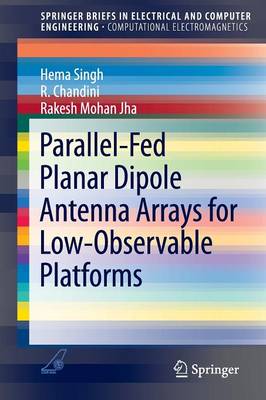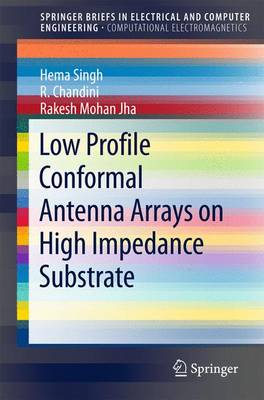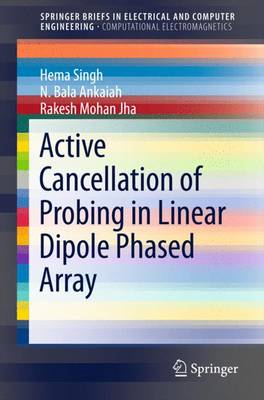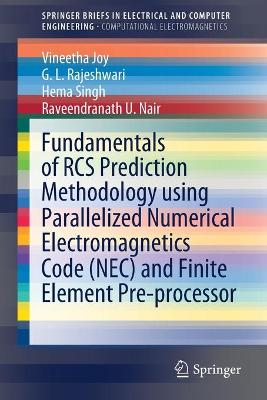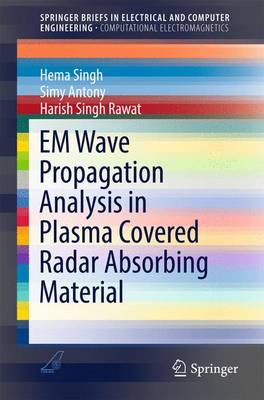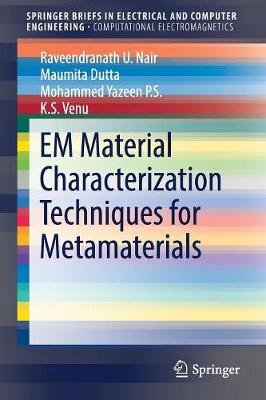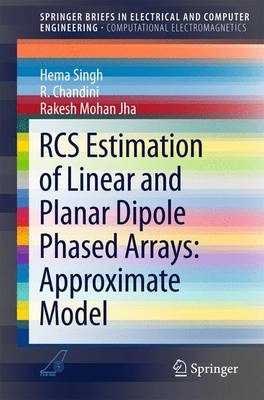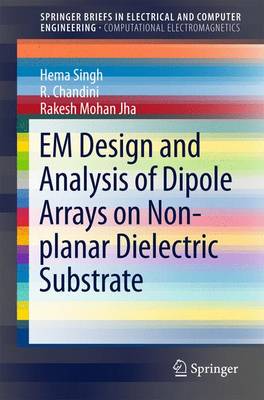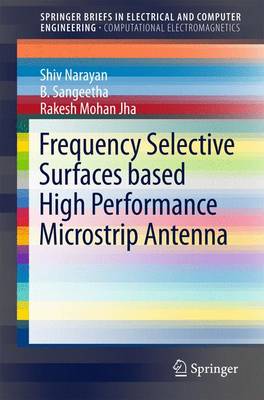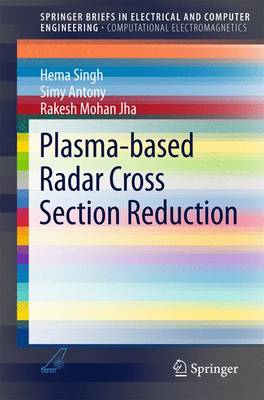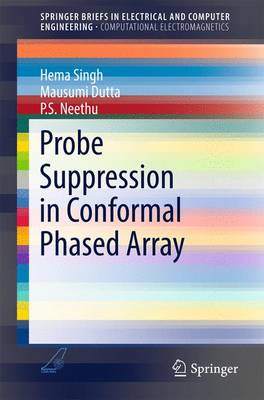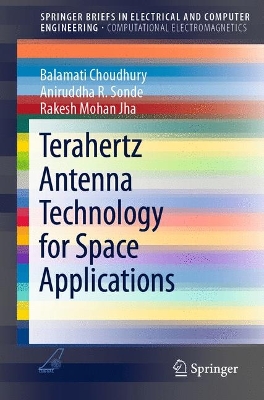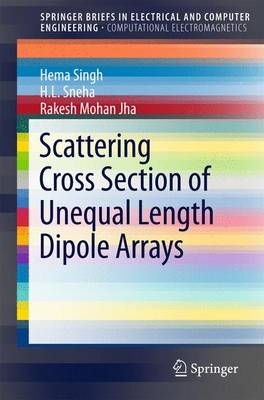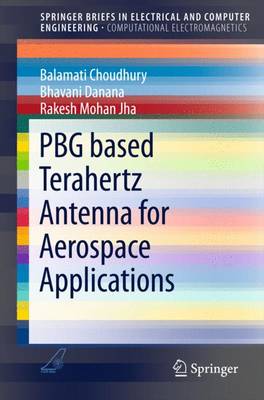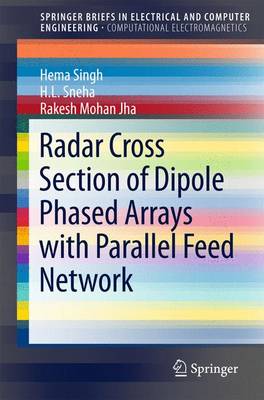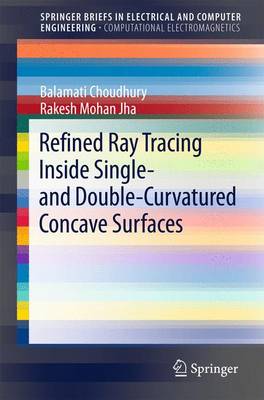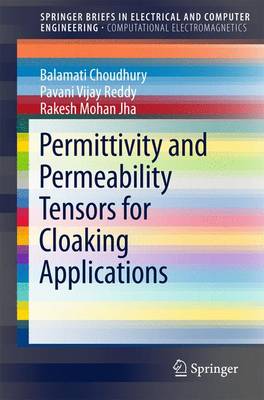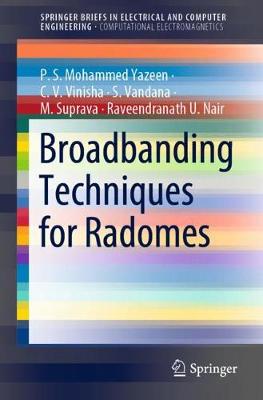SpringerBriefs in Computational Electromagnetics
18 total works
Parallel-Fed Planar Dipole Antenna Arrays for Low-Observable Platforms
by Hema Singh, Chandini R., and Rakesh Mohan Jha
Low Profile Conformal Antenna Arrays on High Impedance Substrate
by Hema Singh, R. Chandini, and Rakesh Mohan Jha
Active Cancellation of Probing in Linear Dipole Phased Array
by Hema Singh, N. Bala Ankaiah, and Rakesh Mohan Jha
In this book, a modified improved LMS algorithm is employed for weight adaptation of dipole array for the generation of beam pattern in multiple signal environments. In phased arrays, the generation of adapted pattern according to the signal scenario requires an efficient adaptive algorithm. The antenna array is expected to maintain sufficient gain towards each of the desired source while at the same time suppress the probing sources. This cancels the signal transmission towards each of the hostile probing sources leading to active cancellation. In the book, the performance of dipole phased array is demonstrated in terms of fast convergence, output noise power and output signal-to-interference-and noise ratio. The mutual coupling effect and role of edge elements are taken into account. It is established that dipole array along with an efficient algorithm is able to maintain multilobe beamforming with accurate and deep nulls towards each probing source. This work has application to the active radar cross section (RCS) reduction. This book consists of formulation, algorithm description and result discussion on active cancellation of hostile probing sources in phased antenna array. It includes numerous illustrations demonstrating the theme of the book for different signal environments and array configurations. The concepts in this book are discussed in an easy-to-understand manner, making it suitable even for the beginners in the field of phased arrays and adaptive array processing.
EM Wave Propagation Analysis in Plasma Covered Radar Absorbing Material
by Hema Singh, Simy Antony, and Harish Singh Rawat
EM Material Characterization Techniques for Metamaterials
by Raveendranath U. Nair, Maumita Dutta, Mohammed Yazeen P.S., and K. S. Venu
This book presents a review of techniques based on waveguide systems, striplines, freespace systems and more, discussing the salient features of each method in detail.
Since metamaterials are typically inhomogeneous and anisotropic, the experimental techniques for electromagnetic (EM) material characterization of metamaterial structures need to tackle several challenges. Furthermore, the modes supported by metamaterial structures are extremely sensitive to external perturbations. As such the measurement fixtures for EM material characterization have to be modified to account for such effects.
The book provides a valuable resource for researchers working in the field of metamaterials
RCS Estimation of Linear and Planar Dipole Phased Arrays: Approximate Model
by Hema Singh, R. Chandini, and Rakesh Mohan Jha
EM Design and Analysis of Dipole Arrays on Non-planar Dielectric Substrate
by Hema Singh, R. Chandini, and Rakesh Mohan Jha
Frequency Selective Surfaces based High Performance Microstrip Antenna
by Shiv Narayan, B. Sangeetha, and Rakesh Mohan Jha
Plasma-based Radar Cross Section Reduction
by Hema Singh, Simy Antony, and Rakesh Mohan Jha
This book presents a comprehensive review of plasma-based stealth, covering the basics, methods, parametric analysis, and challenges towards the realization of the idea. The concealment of aircraft from radar sources, or stealth, is achieved through shaping, radar absorbing coatings, engineered materials, or plasma, etc. Plasma-based stealth is a radar cross section (RCS) reduction technique associated with the reflection and absorption of incident electromagnetic (EM) waves by the plasma layer surrounding the structure. A plasma cloud covering the aircraft may give rise to other signatures such as thermal, acoustic, infrared, or visual. Thus it is a matter of concern that the RCS reduction by plasma enhances its detectability due to other signatures. This needs a careful approach towards the plasma generation and its EM wave interaction. The book starts with the basics of EM wave interactions with plasma, briefly discuss the methods used to analyze the propagation characteristics of plasma, and its generation. It presents the parametric analysis of propagation behaviour of plasma, and the challenges in the implementation of plasma-based stealth technology. This review serves as a starting point for the graduate and research students, scientists and engineers working in the area of low-observables and stealth technology.
Probe Suppression in Conformal Phased Array
by Hema Singh, Mausumi Dutta, and P. S. Neethu
Terahertz Antenna Technology for Space Applications
by Balamati Choudhury, Aniruddha R. Sonde, and Rakesh Mohan Jha
Scattering Cross Section of Unequal Length Dipole Arrays
by Hema Singh, H. L. Sneha, and Rakesh Mohan Jha
PBG based Terahertz Antenna for Aerospace Applications
by Balamati Choudhury, Bhavani Danana, and Rakesh Mohan Jha
Radar Cross Section of Dipole Phased Arrays with Parallel Feed Network
by Hema Singh, H. L. Sneha, and Rakesh Mohan Jha
Refined Ray Tracing inside Single- and Double-Curvatured Concave Surfaces
by Balamati Choudhury and Rakesh Mohan Jha
Permittivity and Permeability Tensors for Cloaking Applications
by Balamati Choudhury, Pavani Vijay Reddy, and Rakesh Mohan Jha
Broadbanding Techniques for Radomes
by P. S. Mohammed Yazeen, C. V. Vinisha, S. Vandana, M. Suprava, and Raveendranath U. Nair
This SpringerBrief details various techniques employed for enhancing the transmission efficiency of radomes by modifying the radome wall configurations. These broadbanding techniques are based on inclusion of metallic wire-grids/meshes in the radomewalls, inclusion of metallic strip-gratings in the radome layers, inclusion of FSS based structures in between the radome layers and the use of inhomogeneous dielectric structures as radome wall. The volume provides detailed chapter-wise explanation of the design aspects and discusses the performance analysis of the modified radome wall configurations. It will be of interest to researchers, academicians and students working in the field of radomes.
